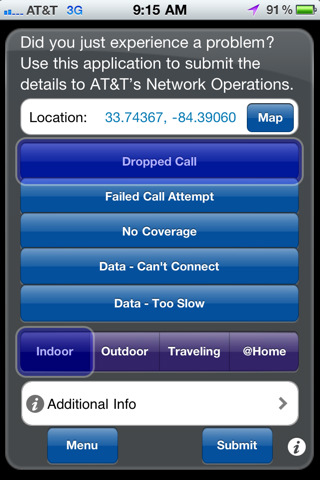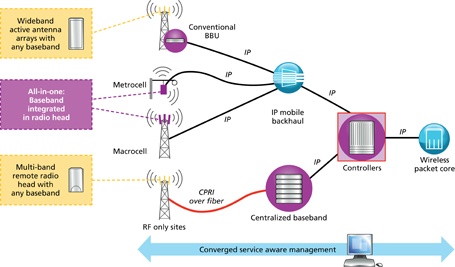The following is from today’s edition of the AGL Bulletin. A subscription link is below the article.
Verizon Wireless has filed a lawsuit against the Town of Irondequoit in the U.S. District Court, Western District of New York, concerning inaction on a proposed cell tower in the upstate New York town. It appears to be a good test case for the FCC’s shot clock, which is designed to ensure municipalities don’t drag their feet in processing cell tower applications.
“I was at the FCC when the shot clock order was issued, and I know that the sincere intent was to spur broadband deployment by creating a more efficient tower siting and collocation review process. Companies prefer to work things out with zoning authorities and lawsuits really tend to be a last resort,” said Monica Desai, Patton Boggs, former FCC official.
Back on June 18, 2010, Verizon Wireless filed an Application for Special Permit with the Town Board to replace an existing 20-year-old tower and equipment shelter at a local fire department with a new monopole and shelter, which could be used for collocation of the fire department and county public safety. The original tower is 62 feet in height with an antenna that reaches 82 feet AGL.
Seven months into the process, Feb. 11, 2011, the Town filed a positive declaration under New York’s State Environmental Quality Review Act, which triggers the time-intensive development of an environmental impact statement. A little more than a month later, Verizon Wireless filed its suit.
Verizon Wireless accused the Town of “unreasonably and repeatedly delaying” it from providing service where a gap currently exists. The carrier noted language in the Telecom Act requiring municipalities to act on requests to build wireless facility in a “reasonable time period,” and the FCC’s definition of that time period at 90 days for collocations and 150 days for new builds.
Both the Town Board and the Town Planning Board met in workshop sessions, followed by a public hearing last July at which the public voiced its concerns. The application was addressed again in a Town Board workshop in August, and a wireless consultant was subsequently hired to review the proposal’s technical aspects. A week later, Verizon Wireless supplied supplemental information, and another public hearing was held at which, according to Verizon Wireless, the same group of residents voiced the same concerns as they had at the earlier hearing.
In September, Verizon Wireless performed two days of crane/transmitter testing to fulfill requirements of the consultant’s report. The tower was scheduled for a vote in September but a supplemental report by the consultant caused an adjournment until October. Two more public hearings were held in October, but the vote was postponed to November because Verizon Wireless had not completed the analysis of its testing.
Also in October, the consultant supplied two supplemental reports requiring additional information from the carrier, a repeat of the crane/transmitter testing by an independent party, the effect of the tower on property values, the structural stability of the tower, sound levels from the on-site generator, title issues on adjoining property and the provision of data services on the tower in addition to voice.
On March 18, 2011, Verizon filed suit against the Town. “The defendants have engaged in unnecessary delays and have unreasonably failed to take final action on the application,” Verizon Wireless wrote in its complaint. “The delays … have put the fire district site application into its 273rd day as of the day of this complaint; far more than the 150-day limit previously prescribed by the FCC.”
But Verizon may face a Shot Clock Order problem of its own making, according to Jonathan Kramer, a lawyer and RF engineer representing governments.
Kramer notes that Section 332(c)(7)(B)(v) of the Telecom Act allows an aggrieved party to file suit “within 30 days after such … failure to act” by a State or local government.
The FCC’s Shot Clock Order clarified when the 30 days begins. Kramer cites that portion of the Order, which says “Specifically, [the Commission finds] that a ‘reasonable period of time’ is, presumptively, 90 days to process personal wireless service facility siting applications requesting collocations, and, also presumptively, 150 days to process all other applications. Accordingly, if State or local governments do not act upon applications within those timeframes, then a ‘failure to act’ has occurred and personal wireless service providers may seek redress in a court of competent jurisdiction within 30 days, as provided in Section 332(c)(7)(B)(v).”
Kramer points out that Verizon admits in its complaint that it waited 273 days from the date of its initial application filing to commence the lawsuit against the Town. Under the shot clock order, the lawsuit should have been filed on or before the 180th day. The delay in filing its lawsuit, according to Kramer, may deal a knockout-blow to Verizon’s shot clock claim.
If you are involved in wireless and tower siting/planning issues and don’t already subscribe to Above Ground Level (AGL), then you should subscribe today at http://www.agl-mag.com/subscribe.html





